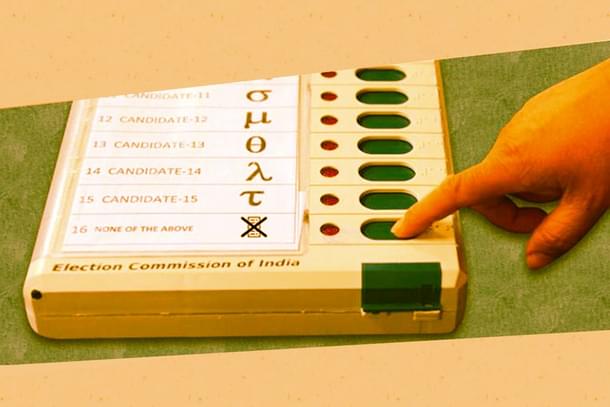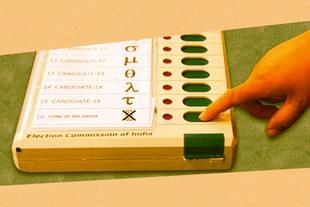World
‘Third World’ Bihar Can Teach ‘First World’ America How To Conduct Election In A Pandemic
Arihant Pawariya
Aug 25, 2020, 05:48 PM | Updated 05:28 PM IST
Save & read from anywhere!
Bookmark stories for easy access on any device or the Swarajya app.


India may still be a ‘third world’ country and the United States of America still the world’s biggest power, economically and militarily, but the former does a few things better than the latter.
Take the welfare payments. As the Covid-19 disease spread in these two countries, large parts of the economy were forced the shut down leaving millions out of work and worrying about the source of their next meal. Both nations decided to give cash payments to millions of its vulnerable people directly.
The Indian state transferred over Rs 35,000 crore to over 16 crore people (almost half of the total US population) in a matter of days. The money was deposited directly into the bank accounts efficiently and easily with no scope of diversion or fraud.
The relief package announced by the US was really massive compared to India’s but it lacks the system of Jan Dhan accounts like India and had to rely heavily on sending cheques to people via mail.
The whole process was marred by inefficiency, fraud and delays so much so that not only some people didn’t receive their cheques (lost in mail) but many received them in weeks from the announcement. And this was known from the start that it could take as many as 20 weeks for everyone to get their cheques.
Another basic thing that the Indian state executes well is the process of conducting elections. Since India conducts general elections over many phases and results are announced few days after the polling is concluded, duration of the whole process is long.
On the other hand, in the US, votes are tallied as soon as the polling ends and there is only one day reserved for casting votes throughout the country. In fact, it’s not unusual for results for some states to start coming in even while polling is still going on in other states (due to time difference between east and west coast of the country). The whole process is concluded in less than 24 hours.
But this time, it is likely to be different. Due to Covid-19 pandemic, there is a huge debate on in the US to allow more and more people to vote via mail. President Donald Trump has raised concerns over postal voting saying the process is susceptible to fraud.
His opponents, as usual, are calling his claims “fake news”. Some Democrats are even advocating for all 50 states to shift to voting via mail and dump the in-person voting at polling booths to prevent the spread of coronavirus.
Postal voting is not new to the US. A few states allow all voting via mail. Majority of the states now allow voters to request ballots at home without providing any excuse. Others allow voters the option with an excuse (if they have disability, disease, etc). The ballots are filled at home and returned via mail or voters can drop the mail in person at designated centres. Not only different states have different rules, even counties within each state have different rules. This is because of the wide freedoms enjoyed by the local governments in the country.
While Trump is opposing massive postal voting, states controlled by Democrats are changing rules to make it easier to vote via mail. Earlier, voters who wished to vote from home would need to request ballot from the authorities. But now, some states are changing rules to send ballots to every registered voter whether they request it or not. Democrats believe that this will spike up vote turnout and help them win. Thus, they want to make it easier for more and more people to vote.
Republicans believe that giving this many relaxations opens up possibilities of fraud. There have been many instances of it already even when the process was much tighter. And given that win margin in some states which will decide the election is going to be razor thin, a few thousand votes here and there could change the game.
But even if fraud angle is overlooked, there is enough evidence of huge problems with postal voting. Tens of thousands of mailed-in votes are discarded in every election either because they have been wrongly filled, not signed, etc.
Moreover, thanks to the inefficient and slow government postal service, mails are lost not in hundreds but in lakhs. In the past, these incidents of people requesting ballots at home and not receiving and people sending the ballots to election officials and those not reaching them abound.
Recently, a court in New Jersey rejected almost 20 per cent of the postal ballots in a municipal election in Paterson which had held election entirely by mail in May. The court has ordered officials to conduct the election again.
Some of the elections to Congressional primaries conducted during the present pandemic are a cautionary tale in themselves. It has taken officials more than a month to tally all the votes in some races which were close. And tens of thousands of mailed-in ballots were rejected.
Now, if the same situation repeats in November, which it is likely to if there is a flooding of postal ballots, it could take weeks if not months to declare the next president-elect.
The point is the US can’t afford to ignore the possibility of fraud, likely rejection of lakhs of mailed-in votes due to valid reasons or the delay in announcing results by even a few days let alone weeks or months.
The country has already wasted four years trying to chase the allegations of Russian meddling in the 2016 general election. If 2020 election loses legitimacy due to the aforementioned reasons, the next president, no matter who he is, will most likely not be seen as legitimate by at least half of the country.
The US has made the process of conducting elections unnecessarily complex by continuing to stick with outdated methods of polling such as paper ballots, mail voting and old machines, which require lever to be pulled up or a use of punch card, etc. Then there are different rules for different counties and states.
The US should rather learn from India how to conduct elections.
Bihar, whose population is more or less same as the population of all battleground states of the US put together, is also going to conduct election in October, days before the US general election. But thanks to the usage of electronic voting machines (EVMs), it will be able to execute the whole thing in a smooth way.
With EVMs, it’s easy to conduct elections in a pandemic. To decrease the long queues, more polling centres can be opened. There can be massive mask distribution drive before the polling day or can be provided one before entering the booth (In any case, everyone has a gamcha in Bihar).
Every voter can also be given a glove before hitting the EVM button so that the next person is not infected. Election officials can also use sanitisers and sprinkle it on every voter entering the booth.
Most importantly, the results will be incontestable and the elected person can enjoy the authority and power both thanks to the legitimacy provided by the transparent process.
The bottom line is: The first world US has a lot to learn from the third world Bihar (or India in general) when it comes to conducting elections in a way that befits a democracy.
Arihant Pawariya is Senior Editor, Swarajya.





